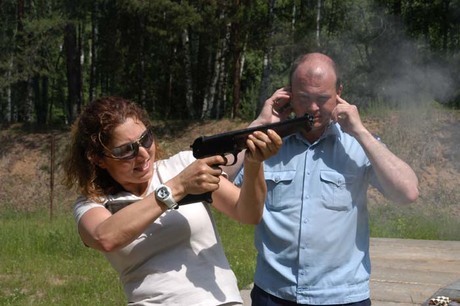Geek Weekly: Our top weird tech stories for 20 November

Technology Decisions’ weekly wrap of IT fails, latest tech, new must-have gadgets, ‘computer says no’ moments and more.
Don’t shoot, I’m an astronaut. Did you know that Soviet and Russian space crews used to carry a triple-barrelled gun into space with them? No, it wasn’t a Cold War-era anti-satellite weapon. The stubby rifle (or lengthy pistol, depending on your view) was carried aboard Soyuz capsules until the late 2000s. Its purpose was to help protect and save crews should they end up landing in inhospitable territory and be faced with ravenous wild animals or a need to attract the attention of rescuers. One of the barrels fired standard rifle bullets, the second shotgun pellets and the third fired flares. Faced with mounting backroom pressure to ‘de-weaponise’ space operations, the Russians quietly dropped the whole idea.

Touchy, feely tech. Have you heard of ‘haptics’? If not yet, you soon will. Haptics means the feedback you get from your sense of touch. Many devices we use today, such as smooth smartphone ‘touchscreens’, do not give us much of a sense of touch. So manufacturers are working hard to incorporate more feedback into devices, such as switches in cars, and for various military applications. After all, if we don’t use our sense of touch, we’re likely to lose it.
China’s supercomputer top of the heap. China’s Tianhe-2 (Milky Way-2), housed at the National Super Computer Centre in Guangshou, has retained its top billing in the Top500.org listing of supercomputers. The machine has performance speed of 33.86 petaflops, or 33.86 thousand trillion floating point operations per second. This is achieved through 16,000 nodes, each of which have two Intel Xeon IvyBridge processors and three Xeon Phi processors, giving a total of 3.12 million computing cores.
100 supercomputers later. The Los Alamos National Laboratory in the US has reached the milestone of having gone through 100 different supercomputers in the span of just 60 years, going from MANIAC (with more than 5000 vacuum tubes) in 1952 to the lab’s current 13 supercomputers, which have names such as Cielo, Lobo, Mustang and Moonlight. This short video shows the installation of Cielo:
Still on supercomputers … IBM has been given US$325 million by the US government to come up with the next generation of supercomputer by 2017, with the aim of tackling big data problems by minimising the movement of data between storage and processors. The first two machines will be put to work on nuclear reactor and nuclear weapons research.
Cessnas are tracking your phone. According to the Wall Street Journal, US federal marshalls have taken to using Cessna aircraft fitted with devices that trick mobile phones into thinking the aircraft is a legitimate cellphone tower owned by one of the big phone companies. The WSJ says the gear is helping the police to track criminals … but it will also, of course, track everyone else within range. As the whole scheme is hush, hush, no one seems to know what becomes of the data or to what purpose it is being put.
Alan Turing, movie star. A film opening next week in the US and Britain details the life and times of Alan Turing, the famous mathematician who developed the ‘bombe’ that broke the German’s Enigma code during WWII. Turing, a tortured soul who was persecuted for being gay, later killed himself.
Four ways AI can finally make threat intelligence useful and not just noisy
Done poorly, threat intelligence is noise. But done well, it becomes one of the most powerful...
Australia’s top tech priorities for 2026
It is anticipated that AI will evolve from a pilot project to a productive standard, underpinned...
Why AI's longevity lies in utility, not novelty
The real potential of AI is in underpinning the invisible systems powering everyday business.







